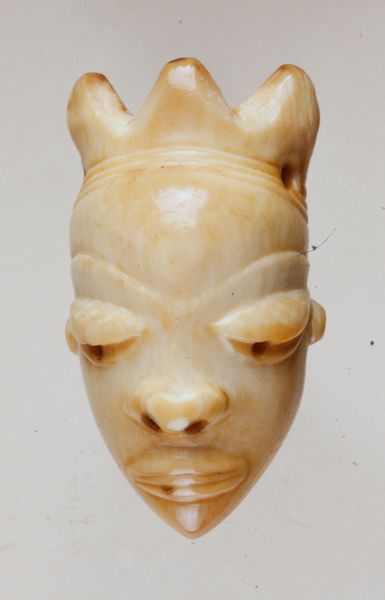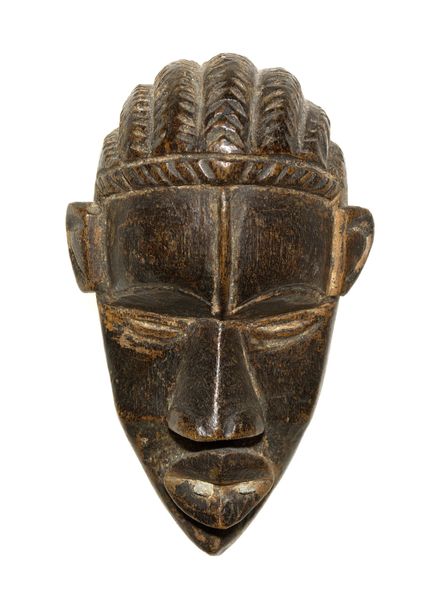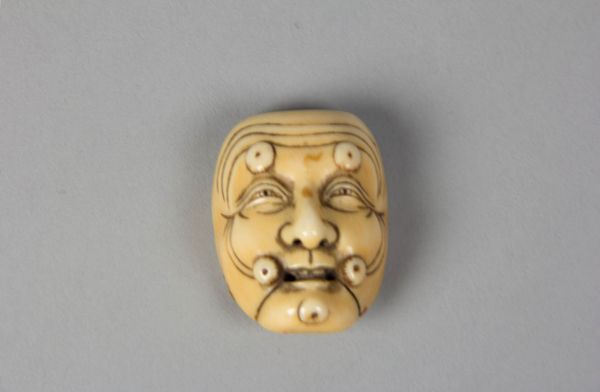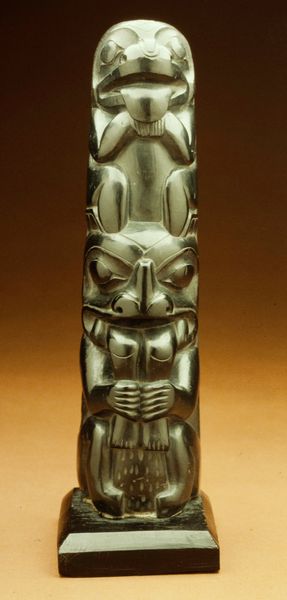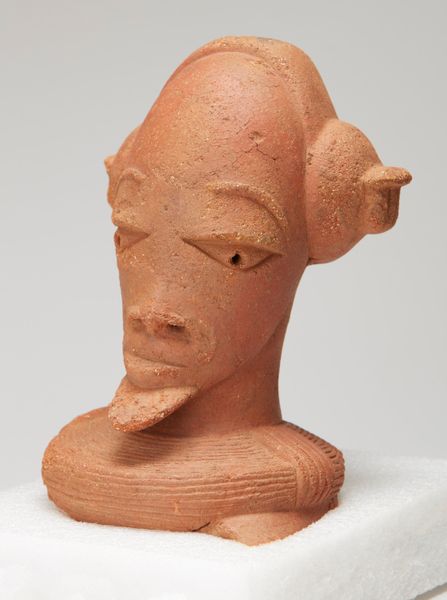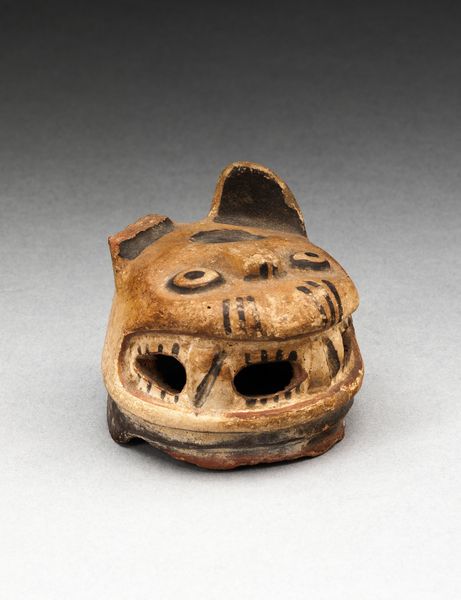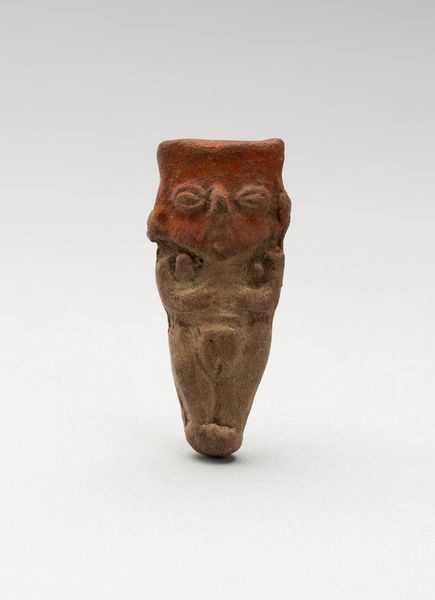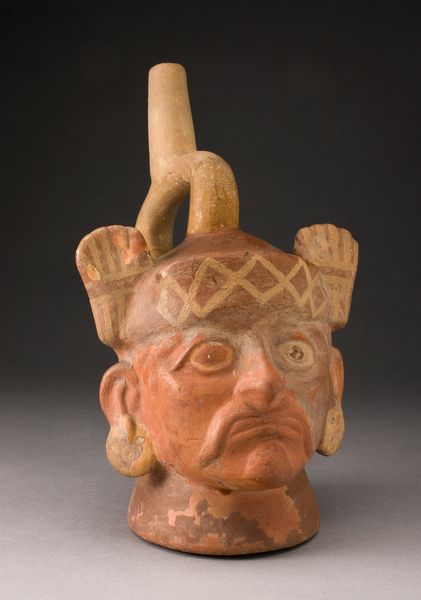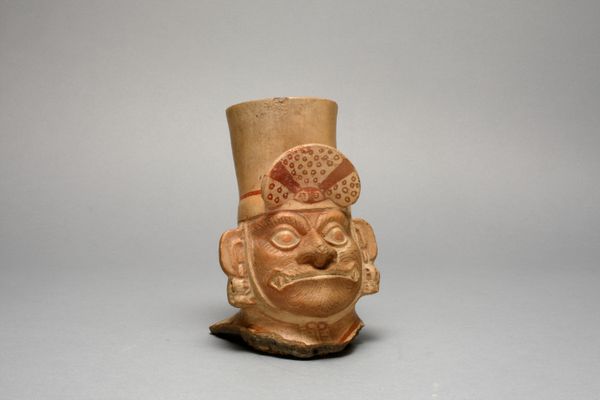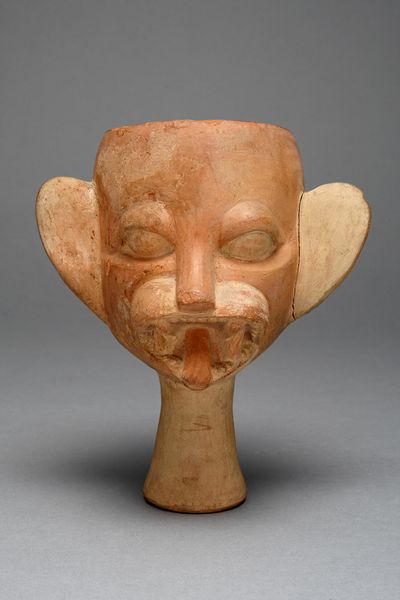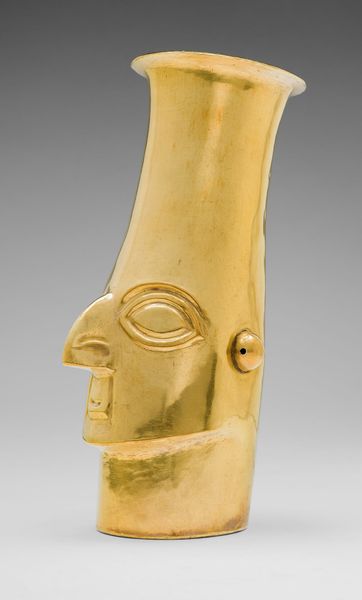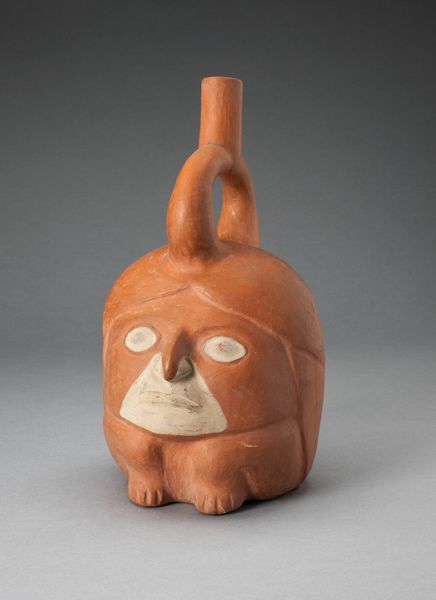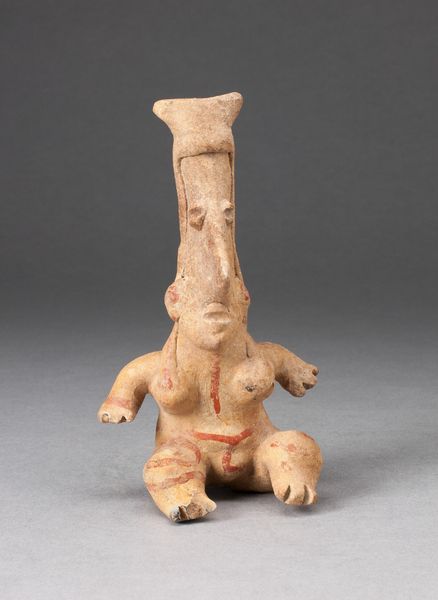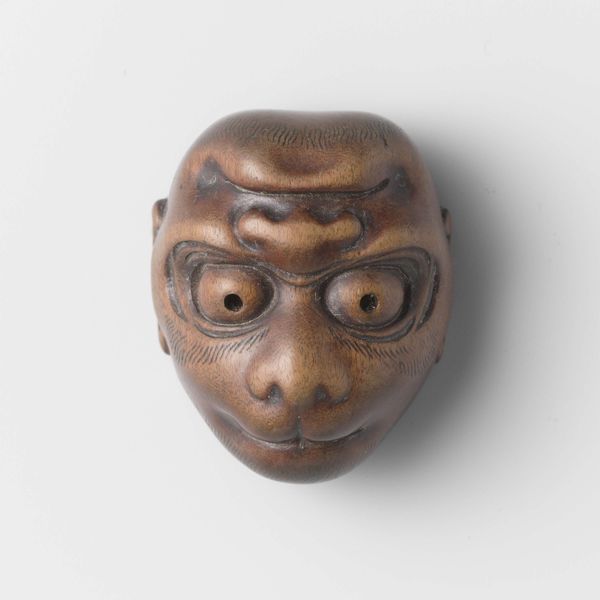
sculpture, ivory
#
portrait
#
african-art
#
sculpture
#
sculpture
#
ivory
Dimensions: 1 7/8 × 7/8 in. (4.76 × 2.22 cm) (without mount)
Copyright: Public Domain
Curator: Let’s discuss this ivory sculpture identified as a pendant, created around the mid-20th century. It’s currently part of the collection at the Minneapolis Institute of Art. Editor: My first impression is one of serenity, despite its small size. The pendant has a regal quality but also a stillness, almost meditative. Curator: That’s an astute observation. Consider the material itself: ivory. Its color and texture have historically been tied to purity, status, and power. The deliberate choice of ivory, I think, positions this pendant within colonial narratives of resource extraction and exoticism. What’s your take on the cultural implications embedded within ivory? Editor: Symbolically, ivory speaks to ancient connections – to elephants, of course, creatures revered in many cultures for their wisdom and strength. The fact that this is a pendant suggests personal adornment, possibly tied to rites of passage or belonging. But the crown… that clearly elevates the symbolic meaning. It denotes status, and something larger than the wearer's mere persona. Curator: Exactly, but we have to also question who decided that it represented "African Art" – the categorization here. By flattening such diverse cultural productions, doesn't that reify Western modes of art categorization and obscure local meanings or the complexities of power at play? I believe it deserves further investigation to know whether the crown is really that, and whose face it depicts and which society this face represents. Editor: I completely agree! It requires more information, and indeed an ethical consideration, not just for this artifact, but for all looted African objects in Western museum collections. But looking at the piece as is, notice how simplified, stylized forms can speak volumes across cultures. I see echoed shapes in Cycladic figures, and certain Egyptian headpieces...there's an aesthetic language that travels, irrespective of historical circumstance. Curator: Perhaps so, but tracing those routes requires unpacking centuries of systemic inequalities. I feel we cannot separate aesthetics from political accountability in our role as mediators. Editor: It’s a conversation we must continually have. Pendants like these offer intimate entry points into vast and often painful historical realities.
Comments
No comments
Be the first to comment and join the conversation on the ultimate creative platform.
